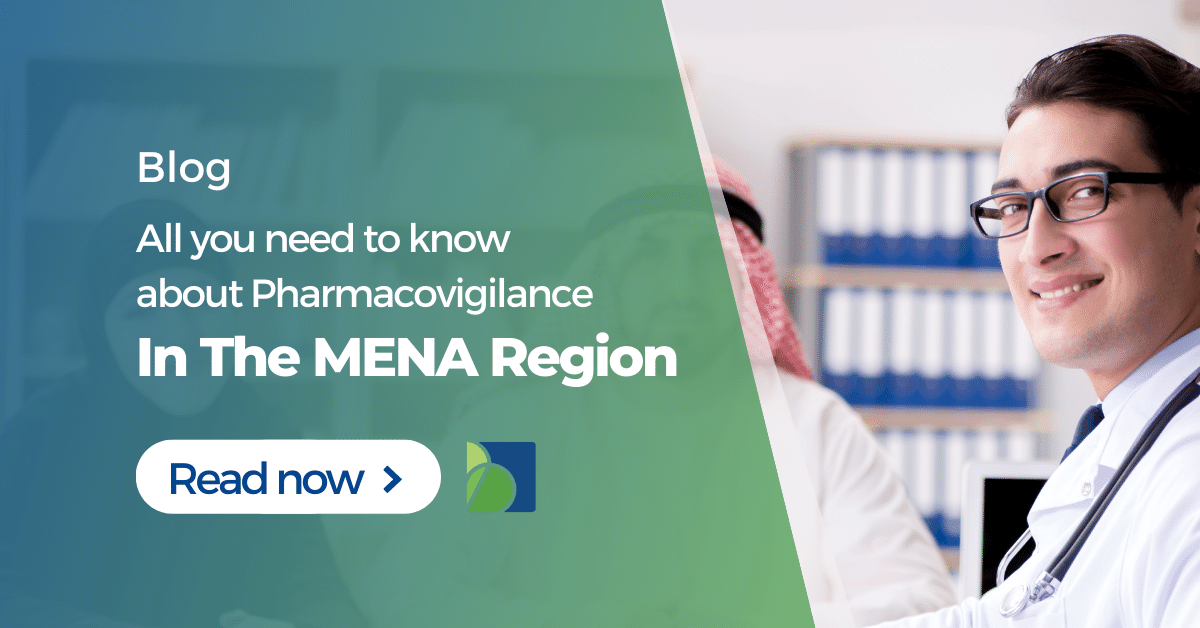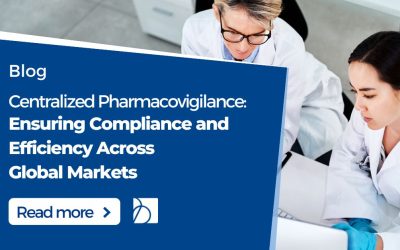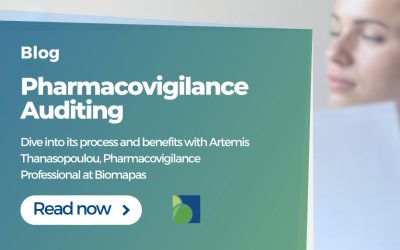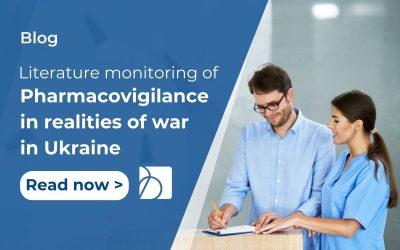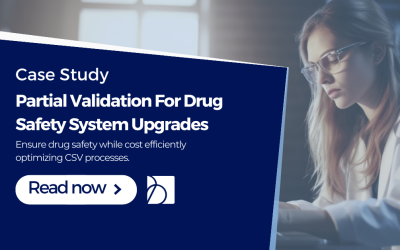What is Pharmacovigilance?
Pharmacovigilance is the field in which approved marketed drugs are investigated for drug safety. The World Health Organization (WHO) defines pharmacovigilance as follows: “Pharmacovigilance is the science and activities relating to the detection, assessment, understanding, and prevention of adverse effects or any other medicine/vaccine-related problem.” Activities in pharmacovigilance include monitoring whether the observations made in the clinical trials are in line with what is observed in a more heterogeneous and more diverse population. Monitoring is done by collecting and reporting data regarding Adverse Drug Reactions (ADRs) and data regarding safety such as off-label use, medication errors, off-label use, drug-related mortality, and more.
In addition, pharmacovigilance personnel investigates interactions between the drug and other drugs and the interactions between the drug and food. Pharmacovigilance aims to ensure that drugs are used safely and effectively by providing information on safety to the public. An additional goal of pharmacovigilance is to accurately define and maximize the risk/benefit ratio and report that in a Risk Management Plan (RMP). Strong legislation is in place to ensure patient safety and proper pharmacovigilance.
How does pharmacovigilance work in the MENA region?
Pharmacovigilance in the MENA region is not consistent, as there are large differences between the level of pharmacovigilance in place in each country. Some countries have excellent and advanced pharmacovigilance systems in place, while others barely have a system at all. Examples of countries with advanced pharmacovigilance systems are Tunisia, Morocco, Saudi Arabia, and Jordan. On the other hand, Yemen, Libya, and Palestine are countries with minimal pharmacovigilance systems in place.
In 2018, only 45% of all Arab countries were official members of the WHO Collaborating Centre for International Drug Monitoring (WHO-UMC), and 33% of Arab countries were associate members. The WHO-UMC is responsible for the safety of medications and the processing of individual case safety reports (ICSRs). Official member states are required to send ICSRs to the WHO-UMC quarterly. Arab ICRSs have above-average completeness scores, which indicates data quality.
In 2015, Arab WHO-UMC member states adopted guidelines on Good Pharmacovigilance Practices (GVP) specifically for these countries. The Arab GVP describes how Marketing Authorization Holders have to collect, evaluate and report information related to adverse drug reactions.
Additionally, it describes that you should share all relevant information with the medical authorities to improve pharmacovigilance. The Arab GVP is largely based on the European GVP. However, national medicine authorities can still have changed and different requirements for Market Authorization Holders (MAH), which should be mindful of the countries’ regulations in which they aim to operate. The table below gives an overview of countries in the MENA region and their WHO-UMC membership status and the development of a pharmacovigilance system.
Pharmacovigilance in Saudi Arabia
The main authority in Saudi Arabia related to drug registration is the Saudi Food and Drug Authority (SFDA). With the establishment of the SFDA, the Saudi Ministry of Health started with pharmacovigilance activities. In 2009, the SFDA founded a sub-division specializing in pharmacovigilance: the National Pharmacovigilance Center (NPC). With the establishment of the NPC, Saudi Arabia fulfilled the requirements to become a WHO-UMC member and has been a member since.
In 2015, the SFDA GVP was published based on the EU GVP, similarly to the Arab guidelines. The Saudi guidelines have minor differences from the European guidelines in how periodic safety update reports have to be submitted. A difference in regulations between the Saudi and Arab GVP is that the Saudi guidelines do not require PSURs for generics. In addition, the QPPV should reside in Saudi Arabia and is required to be either a pharmacist or physician.
Pharmacovigilance in Egypt
Like Saudi Arabia, Egypt is a country with advanced pharmacovigilance. Egypt has been a WHO-UMC member state since 2001 and had a leading role in establishing the Arab GVP. The Egyptian Ministry of Health and Population (MOHP) provides most healthcare in the country. The MOHP established the Egyptian Pharmaceutical Vigilance Center (EPVC) to develop additional pharmacovigilance guidelines.
Unlike some other countries in the MENA region, the EPVC has introduced a colour system for the forms used to report ADRs. Forms in the colour yellow are used to report pharmacovigilance problems of drugs for human use. Blue forms are used for reports on disinfectant products, while white forms are used for issues related to drug quality. Pink forms are used to report issues related to medical devices. Companies operating in Egypt should have a pharmacovigilance system master file describing the pharmacovigilance activities in the country. In addition, QPPVs should reside in the country and are required to be fully dedicated to the position.
Pharmacovigilance in Jordan
The pharmacovigilance centre in Jordan was established in 2001 and is a department of the Jordanian Food and Drug Administration (JFDA). Since Jordan established the centre relatively early, it has played a significant role in developing the Arab GVP. Like the United Kingdom, Jordan uses the yellow card system to report ADR.
Since the Jordanian pharmacovigilance centre played a prominent role in developing the Arab GVP, it should be no surprise that it follows mostly the same guidelines as the Arab pharmacovigilance guidelines. In addition to submitting an RMP when the drug is registered for the first time, additional RMPs are required when significant changes are made, such as new indications or newly acquired safety information. A QPPV should reside in the country overseeing the pharmacovigilance activities of the company.
Below is a table that shows an estimate of their respective WHO-UMC Status and pharmacovigilance level for countries in the MENA region.
| Country |
WHO-UMC Status |
PV System Level |
| Algeria |
Full member since 2021 |
Moderate |
| Bahrain |
Associate member since 2002 |
Low |
| Djibouti |
No membership |
None |
| Egypt |
Full member since 2001 |
High |
| Iran |
Full member since 1998 |
Moderate |
| Iraq |
Full member since 2010 |
Moderate |
| Israel |
Full member since 1973 |
High |
| Jordan |
Full member since 2002 |
High |
| Kuwait |
Full member since 2021 |
Low |
| Lebanon |
Full member since 2021 |
Low |
| Libya |
Full member since 2021 |
Moderate |
| Morocco |
Full member since 1992 |
High |
| Oman |
Full member since 1995 |
High |
| Palestine |
No membership |
None |
| Qatar |
Associate member since 2013 |
Low |
| Saudi Arabia |
Full member since 2009 |
High |
| Syria |
Full member since 2018 |
Low |
| Tunisia |
Full member since 1993 |
High |
| United Arab Emirates |
Full member since 2013 |
High |
| Yemen |
Associate member since 2018 |
Low |
Pharmacovigilance challenges in the MENA region
Although multiple countries in the MENA region have advanced pharmacovigilance systems, several countries have non-existent pharmacovigilance systems in place, such as Libya and Palestine.
However, there are still challenges in countries where pharmacovigilance systems exist. Overall, there is still poor PV awareness and underreporting from the public. Additionally, there is not enough trained personnel to perform PV-related tasks, and there are many issues with existing regulations in some of the less-developed countries regarding pharmacovigilance. However, where there are challenges, there usually lie opportunities because parts of the MENA region would benefit from technological advancements to ensure high-quality and effective pharmacovigilance.



